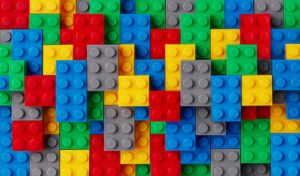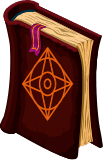
There are very few toys that have had the widespread popularity and success that Lego® bricks have had. Coming in a vast array of sizes, shapes, and colors, the tiny bricks have completely changed the way that children (and adults alike) create, learn, build, and play. But believe it or not, the brand has surprisingly humble roots and has come a long way over the last 90 years! Keep reading to learn more about the history of Lego® along with some interesting facts about the colorful, beloved blocks.
The Origins of the Lego® Brick
The LEGO group was founded in 1932 by a Danish carpenter named Ole Kirk Kristiansen. Due to the ongoing global economic crisis at the time, Kristiansen was forced to pivot his business from ordinary carpentry to toy production. However, this swing from wooden household articles like ladders and ironing boards to toys would prove to be quite promising!
He started out crafting wooden toys like trains, cars, and yo-yos, but in 1949, after switching from wooden to plastic materials, his company introduced the first prototype of the Lego brick, named “Automatic Binding Bricks.” Based loosely on the existing Kiddicraft Self-Locking Bricks that were patented in the United Kingdom at the time, LEGO modified the design. They used a cellulose acetate (a bioplastic material) to create stackable blocks that locked together by means of several round studs on top and a hollow rectangular bottom. The blocks snapped together, but not so tightly that they required extraordinary effort to be separated.
By the 1950’s, Ole Kirk Kristiansen’s son, Godtfred, had become the managing director of the LEGO group—and soon after, the Lego® brick in its present form was launched in 1958. The interlocking principle with its tubes makes it unique, and it offers virtually unlimited building possibilities.
The Modern Lego® Brick
The name “LEGO” is actually an abbreviation of two Danish words: “leg” and “godt”, which literally means “play well.” Needless to say, this name is also an important philosophy that has driven the company to becoming the world’s largest manufacturer of toys and generating billions of dollars in annual revenue. Today, across the globe you can find Lego® sets of all sizes, all shapes, and for virtually all ages. With a steadfast priority on product safety and improvements in quality, as well as a new logo in 1973, Lego® has cemented itself as the premier toy for fostering creativity and spurring imagination.
Lego® Fun Facts
Here are some additional fun facts about Lego®:
- The LEGO Group’s motto is “det bedste er ikke for godt” which means literally “the best is never too good.” This motto was created by Ole Kirk Kristiansen to encourage his employees to never skimp on quality, a value he believed in strongly.
- Over 36,000 Lego® bricks are molded every minute, and about seven Lego® sets are sold every second!
- In 2011, the Space Shuttle Endeavor mission STS-134 brought up 13 Lego® kits to the International Space Station, where the astronauts constructed models to see how they’d react in microgravity.
- Lego® is technically the world’s leading tire manufacturer, producing 306 million rubber tires every year!
- In 2013, the largest Lego® model (at the time) ever was created using a whopping 5,335,200 bricks—displayed in New York, it was a 1:1 scale model of an X-Wing from Star Wars! A 42-foot-tall replica of London’s Tower Bridge more recently claimed the record.
About Bricks & Boards+
Bricks & Boards+ is thrilled to offer a wide variety of board games, trading cards, Lego® sets and more to patrons in the Dawsonville community. As one of the largest and most well-stocked Lego® resellers in the area, they’re the perfect spot for novices and collectors alike. Feel free to learn more about the shop and their collection by visiting their website or giving them a call at (706) 203-1378.





